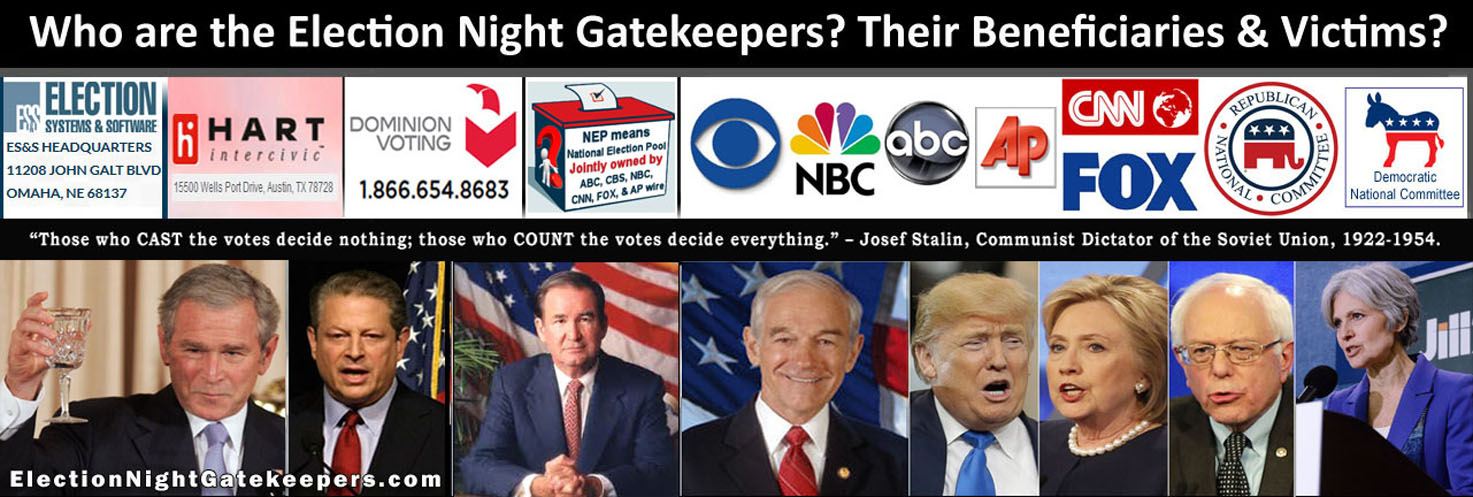U.S. Supreme Court Decisions
The Three US Supreme Court Decisions on the Two Parts of Your Right to Vote
Three Supreme Court Decision have ruled clearly and emphatically that your right to vote consists of TWO parts:
1) the Right to cast a ballot, i.e., put a paper ballot into a ballot box, and;
2) Right to KNOW that your vote was counted accurately.
We still are allowed to cast a ballot, but we HAVE NO IDEA if our ballot is being counted accurately or not on these mysterious, secret computerized programs. In fact, you will see that these Supreme Court decisions make secret computer counts illegal, precisely because no one can see what’s happening inside the election computer.

The following research was done by Dan Gutenkauf of Arizona and the Watch The Vote USA board:
ALL Americans HAVE A RIGHT to a verifiable and transparent vote count in line with THREE standing Supreme Court decisions. One of those US Supreme Court decisions, Wesberry v. Sanders, 1964, stated that all other rights, even the most basic, are illusory if the right to vote is undermined. The other two relevant US Supreme Court decisions, namely, US v Mosley (1915) and Reynolds v Sims (1964) say that our right to vote consists of two parts: a) the right to cast a ballot; b) the right to KNOW that our vote has been counted accurately. Excerpts from these vitally important U.S. Supreme Court rulings follow below:
Wesberry v. Sanders 1964 OPINION OF THE COURT
Justice Black: “Not only can this right to vote not be denied outright, it cannot, consistently with Article I, be destroyed by alteration of ballots, see United States v. Classic, 313 U.S. 299, or diluted by stuffing of the ballot box, see United States v. Saylor, 322 U.S. 385. No right is more precious in a free country than that of having a voice in the election of those who make the laws under which, as good citizens, we must live. Other rights, even the most basic, are illusory if the right to vote is undermined.” https://www.law.cornell.edu/supremecourt/text/376/1
(Please note that once a paper ballot is turned into an electronic impulse it can easily be altered by the computer program or election machine, as was proven in the Bernecker case in Louisiana in 1996, and in the Trump case in the Texas Primary in 2016. Also, altering thousands of votes by computer fraud in the blink of an eye, as is indicated in Chapter 2 and Appendix 2 of the book, Black Box Voting, by Bev Harris, and in the HBO documentary, Hacking Democracy, — amounts to blatant stuffing of the ballot box with falsified votes.
US v Mosley 1915 Mr. Justice Holmes delivered the opinion of the court:
“It is not open to question that this statute is constitutional, and constitutionally extends some protection, at least, to the right to vote for members of Congress. Ex parte Yarbrough, 110 U.S. 651 , 28 L. ed. 274, 4 Sup. Ct. Rep. 152; Logan v. United States, 144 U.S. 263, 293 , 30 S. L. ed. 429, 439, 12 Sup. Ct. Rep. 617. We regard it as equally unquestionable that the right to have one’s vote counted is as open to protection by Congress as the right to put a ballot in a box. ” http://caselaw.findlaw.com/us-supreme-court/238/383.html
The court added:
“We regard it as equally unquestionable that the right to have one’s vote counted is as open to protection by Congress as the right to put a ballot in a box.” The court then traced the history of § 19 from its origin as one section of the Enforcement Act of May 31, 1870, which contained other sections more specifically aimed at election frauds, and the survival of § 19 as a statute of the United States notwithstanding the repeal of those other sections. The conclusion was that § 19 protected personal rights of a citizen including the right to cast his ballot, and held that to refuse to count and return the vote as cast was as much an infringement of that personal right as to exclude the voter from the polling place. The case affirms that the elector’s right intended to be protected is not only that to cast his ballot but that to have it honestly counted. Page 387 c. 114, 16 Stat. 140, as amended by c. 99, 16 Stat. 433.
https://casetext.com/case/united-states-v-mosley-6/case/united-states-v-saylor#cited-link-1
Reynolds v. Sims, 377 U.S. 533 (1964)
[Footnote 40] As stated by MR. JUSTICE BLACK, dissenting, in Colegrove v. Green, 328 U. S. 549, 328 U. S. 569-571:
“No one would deny that the equal protection clause would . . . prohibit a law that would expressly give certain citizens a half-vote and others a full vote. . . . [T]he constitutionally guaranteed right to vote and the right to have one’s vote counted clearly imply the policy that state election systems, no matter what their form, should be designed to give approximately equal weight to each vote cast. . . . [A] state legislature cannot deny eligible voters the right to vote for Congressmen and the right to have their vote counted. It can no more destroy the effectiveness of their vote in part and no more accomplish this in the name of ‘apportionment’ than under any other name.” https://supreme.justia.com/cases/fe…
End of this page on the three US Supreme Court decisions on the two parts of the right to vote
